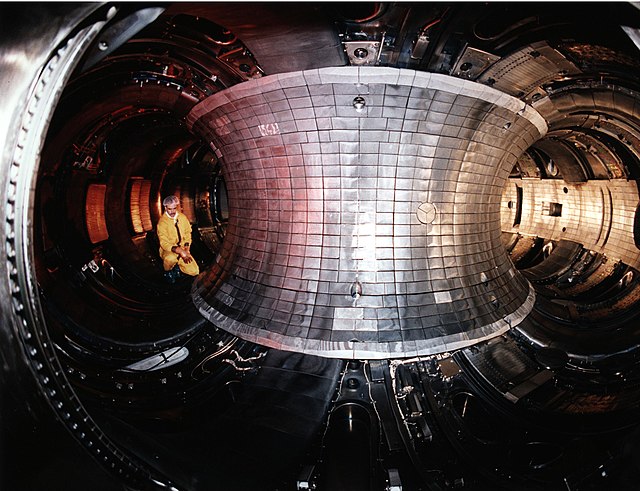Tokamak Fusion Test Reactor
The Tokamak Fusion Test Reactor (TFTR) was an experimental tokamak built at Princeton Plasma Physics Laboratory (PPPL) circa 1980 and entering service in 1982. TFTR was designed with the explicit goal of reaching scientific breakeven, the point where the heat being released from the fusion reactions in the plasma is equal or greater than the heating being supplied to the plasma by external devices to warm it up.
TFTR in 1989
Inside the TFTR plasma vessel
A tokamak is a device which uses a powerful magnetic field generated by external magnets to confine plasma in the shape of an axially-symmetrical torus. The tokamak is one of several types of magnetic confinement devices being developed to produce controlled thermonuclear fusion power. The tokamak concept is currently one of the leading candidates for a practical fusion reactor.
The reaction chamber of the DIII-D, an experimental tokamak fusion reactor operated by General Atomics in San Diego, which has been used in research since it was completed in the late 1980s. The characteristic torus-shaped chamber is clad with graphite to help withstand the extreme heat.
A USSR stamp, 1987: Tokamak thermonuclear system
Ronald Richter (left) with Juan Domingo Perón (right). Richter's claims sparked off fusion research around the world.
Red plasma in EAST, with visible light radiation dominated by the hydrogen alpha line emitting 656 nm light.






